Nikon D5500 detailed review
INTRODUCTION
Nikon D5xxx series has been a reasonable success, offering budding photographers a decent upgrade over hand-me-down cameras, advanced point-and-shoots, and an overall competent package to begin with. As the situation lies with cameras, update cycles are much slower than other gadgets, and the Nikon D5500 comes in almost a year-and-half after its predecessor, the Nikon D5300.
As of now, the Nikon D5300 (18-55mm lens kit) is selling for Rs. 35,999 on Amazon, while the same kit for Nikon D5500 is for Rs. 48,199. For a premium of Rs. 12,200, you can buy an extra lens, a camera bag, memory card and tripod. Does the Nikon D5500 justify not buying an older generation camera body with two lenses and accessories? Here’s how it may, or may not, depending on you.
WHAT HAS CHANGED
Directly comparing the Nikon D5500 with the D5300, there is not a great deal that has been upgraded in the latest generation DSLR. Natively, the Nikon D5500 can bump up the ISO to 25600, while the D5300 managed 12800. In terms of the LCD viewfinder, the Nikon D5500 features a 3.2-inch, 1037k-dot TFT LCD vari-angle touchscreen display, with approximately 100% frame coverage, brightness control and eye-sensor control. This is possibly the most notable upgrade here over the D5300, which had a similar display minus the touchscreen capability and no eye-sensor control. The inclusion of touch input makes a lot of difference, which we shall discuss below. Another neat addition is the flat picture control, that renders photographs as close to real details as possible, thus allowing you ample room to post-process the photos that you take. A step taken backwards by Nikon is the removal of the in-built GPS unit, which was present in the Nikon D5300. Nevertheless, the D5500 does retain the in-built WiFi module, and you can still access your photographs on the go. The presence of Geotagging would have been excellent, but that is not the case. You can still opt for an external GPS module, should you need one. Other significant differences are the lighter body, and improved battery efficiency. With battery and memory card, the Nikon D5300 weighs 530 grams, while the Nikon D5500 weighs 470 grams. Also, while both the cameras deploy the same EN-EL14a rechargeable battery pack, optimisations in the Nikon D5500 state that it is capable of capturing upto 820 shots, 220 more than the Nikon D5300. One small ergonomic change is the placement of the settings control dial – instead of being a contoured dial placed on the rear end, it is now placed on the top, beside the Mode dial, with the Live View toggle wedged in the middle.

Everything else remains the same – the 24.2 megapixel CMOS sensor, the EXPEED 4 image processor, and 39 focus points. All of this, hence, means that unless you would really prefer the touch input, the Nikon D5300 is mighty similar and close to the Nikon D5500. But, there are a number of aspects that the Nikon D5500 excels at. The following sections will dissect everything down further.
BUILD and DESIGN
The Nikon D5500 is the smallest and lightest DSLR yet made by Nikon, falling about 6 millimetres shorter than the Nikon D5300. The light weight and compact dimensions will have discerning photographers and enthusiasts frowning, but for beginners, this is the ideal transition camera from compact bodies to DSLRs. It is, in terms of DSLRs, comfortable to hold when you are shooting for long hours.
The build, in general, is the standard that has been seen from Nikon – reasonably good, black-speckled plastic, well-sealed hinges and joints that make the camera weather-resistant (although I would suggest you to be somewhat careful with it, anyway). A left rubber flap houses all the ports except HDMI, which is placed to the right, just above the SDXC memory card slot. The rest of the button arrangement is quite standard, and with the small body, is easy to reach and use. Hand grip is good, and the rubberised sections on the front help palm grip.
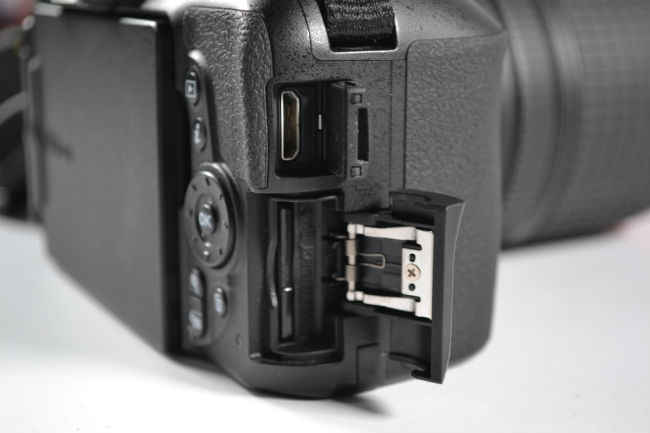
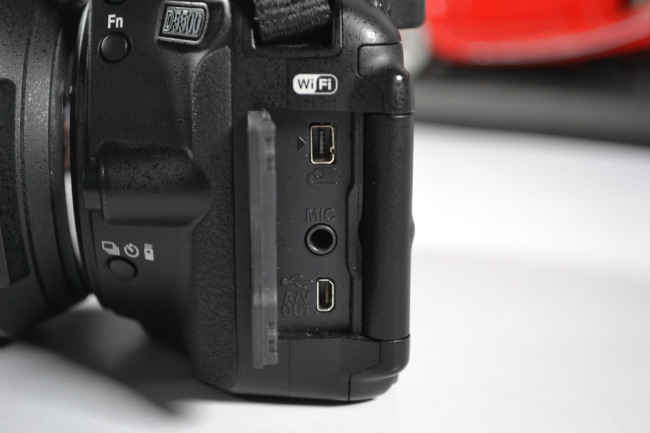
There is not much that can be added about the design – its all austerely DSLR-like, although that is how I personally prefer it to be. The white body and neon-LED buttons on the Pentax K-S2 were, somehow, a rather uninspiring combination for a device aiming at semi-professional photography. The curves are smooth, and despite the upright make, Nikon’s camera designers have managed to maintain a smooth flow with the Nikon D5500.
To sum up, the Nikon D5500 is compact, surprisingly small for a well-equipped DSLR unit, and is designed well to appeal to beginners and semi-professional photographers, yet prepare them for future upgrades in cameras.
IMAGE SAMPLES
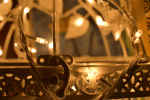
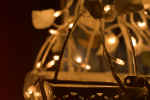
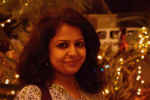
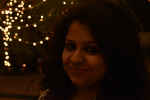
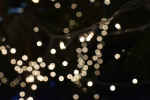
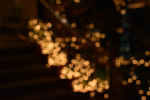
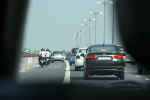
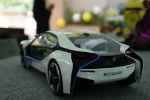

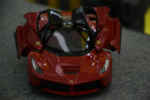
Index:
Image 1: Low Active D-Lighting, Shade, Indoor (1/100", f/5.6, ISO 400)
Image 2: Shade, Indoor (1/160", f/5.6, ISO 400)
Image 3: High Active D-Lighting, Shade, Outdoor (1/50", f/5.6, ISO 800)
Image 4: Tungsten, Outdoor (1/50", f/5.6, ISO 800)
Image 5: Bokeh, Auto WB (1/125", f/5.6, ISO 800)
Image 6: Bokeh, Shade (1/320", f/5.6, ISO 800)
Image 7: Auto WB, Outdoor (1/320", f/8, ISO 200)
Image 8: Fluorescent, Indoor (1/60", f/5.6, ISO 200)
Image 9: Low Active D-Lighting, Fluorescent, Indoor (1/50", f/5.6, ISO 200)
Image 10: Fluorescent, Indoor (1/50", f/5.6, ISO 200)
IMAGING PERFORMANCE
The kit that I received for review came with a Nikkor AF-S 18-140mm f/3.5-5.6G ED VR lens. To begin with, you will need to equip the Nikon D5500 with the best of lenses and be adept at photography to notice all the differences that persist between the Nikon D5500 and the D5300. Image quality is excellent, and the diverse range of controls give you a wide grasp over the way you want your photograph to be like. Shutter speeds range between 1/4000-second to 30 seconds, as is the standard range. The D5500 can shoot RAW images, saved in NEF (Nikon Electronic Format). JPEG images have the option for Fine (1:4 compression), Normal (1:8 compression) and Basic (1:16 compression).
Being a budget DSLR, the Nikon D5500 houses a pentamirror viewfinder, instead of pentaprism ones that are found in more expensive ones. This does not pose a serious issue – after two-and-half months of rough usage and multiple lens changes, the Nikon D5500 has not led to residue being found in the mirrors, and focusing in low light is fairly decent, assisted by the autofocus assist beam. Continuous shooting is steady and fast, and although constantly shooting in burst does lead to the camera body slightly heating up, it is not an issue that will plague the usage of your camera.
In terms of regular usage, shooting in daylight situations is easy, fast and constantly accurate. You can simply set your camera up with Active D-Lighting turned off and Standard Picture Control, and get clicking. For more specific needs, you can tweak settings around to help you render the perfect image that you are looking for – as perfect as budget segment DSLR cameras can get. There is no flaw in the aperture, and the Nikon D5500 produces nice, hexagonal bokehs that are pretty to the eye. Setting your camera to ‘flat’ picture control will give you a ‘flat’ image – no image enhancement of any form, which is ideal if you intend to post-process your photographs.
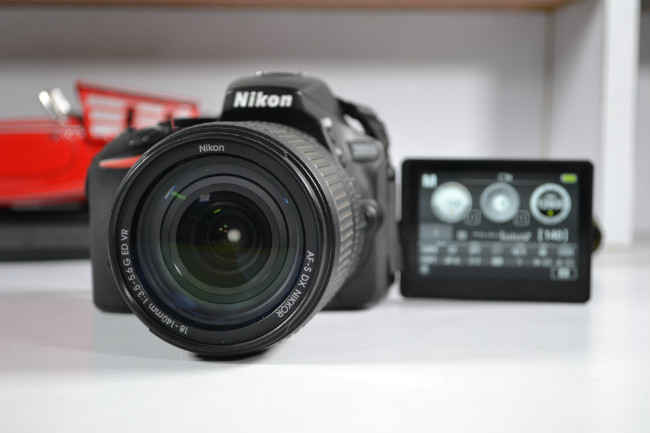
For low light situations such as night landscape photography, the native ISO capability can go up to 25600, and while noise levels do increase vividly, low light performance is very good. You can also use Active D-Lighting to enhance your low light images. The Expeed 4 image processor has been tweaked to be more efficient, producing better image quality than the predecessors of the Nikon D5500, and there is a distinct true-to-source tone and clarity in photos that you take with this camera (in any lighting condition), which makes almost all photographs look nice.
The 39 focus points (9-point cross sensor) leads to really fast and accurate focusing. One good aspect about the Nikon D5500 is the excellent Auto mode, which will aid beginners and semi-professional photographers. Even for more advanced photographers, the excellent focusing system simply locks on to objects faster, smoother and better – in any lighting conditions, unless you are shooting into almost darkness. The presence of the touchscreen, on top of the excellent focusing mechanism, makes it even better. The focusing module present in the Nikon D5500 is also the smoothest and most silent unit in the budget segment.
Moving on to the touchscreen LCD display, the biggest addition to the D5500 over the D5300 – this one almost single-handedly pulls the camera ahead of the pack, making it not only one of the most convenient cameras to use, but also one of the best. The touch input response is fluid, and while recording videos, you can simply track object focus with a finger. This is incredibly useful when it comes to sports or wildlife photography which do not really have a predictable stature. Add to this the autofocus gamut of the D5500, and you have one of the best cameras around, particularly in the budget segment. You can also use it as a shutter input, with the D5500 providing touch-to-click option. This makes a lot of difference – one, if you are shooting in auto mode in any given situation, you can keep clicking with one finger touch input. Secondly, with a neatly laid-out information display on the screen, you can control most settings like ISO, white balance, D-Lighting, metering and the likes, without the need to access any physical buttons.
While daylight photography is bright, crisp and renders high detail images, shooting in RAW mode will give you an excellent possibility to tinker around with the entirety of an image’s details. In silhouette photography, the Nikon D5500’s excellent dynamic range comes in to play. The D5500 has a dynamic range of 12.3EV, which allows it to render the best images in silhouette photography. Silhouette photographs, clicked in extreme contrast situations, are rendered with excellent quality. In normal conditions, the D5500 renders excellent colour depth in harshly lit situations, and the dynamic range makes the D5500 the undisputed best camera in this segment. To get the most out of the Nikon D5500 in situations like profile photographs and wide landscapes, shoot using lenses like Nikkor AF-S DX 35mm f/1.8G prime lens. This, undoubtedly, is the king of entry-segment DSLRs.
ACCESSORIES, SERVICE and AVAILABILITY
To accompany the excellent camera, you have Nikon’s extensive range of lenses and other accessories, including a vast support of Nikon’s F-mount lenses, camera bags, tripods and other accessories. Add to that Nikon’s massive distribution chain (both offline and online), service centres all across India, and various discounts and offers (official and local), and the Nikon D5500 makes for the perfect deal.
BOTTOMLINE
The Nikon D5500 is an excellent DSLR in the budget segment. While it is an incremental upgrade over the Nikon D5300, there are different customer groups to whom the D5500 will make sense. For entry-level photographers looking for more lenses, the D5300 will make sense. Also, if you own a budget level DSLR upto D5200, upgrading to the D5500 is a better choice because, in the long run, it makes more sense. Nikon, with a somewhat specific incremental upgrade to its mid-range DSLR, has shown how the D5500 is the camera to own for the next few years. it is, indeed, a great product.
[ad_2]
Source link

Post a Comment